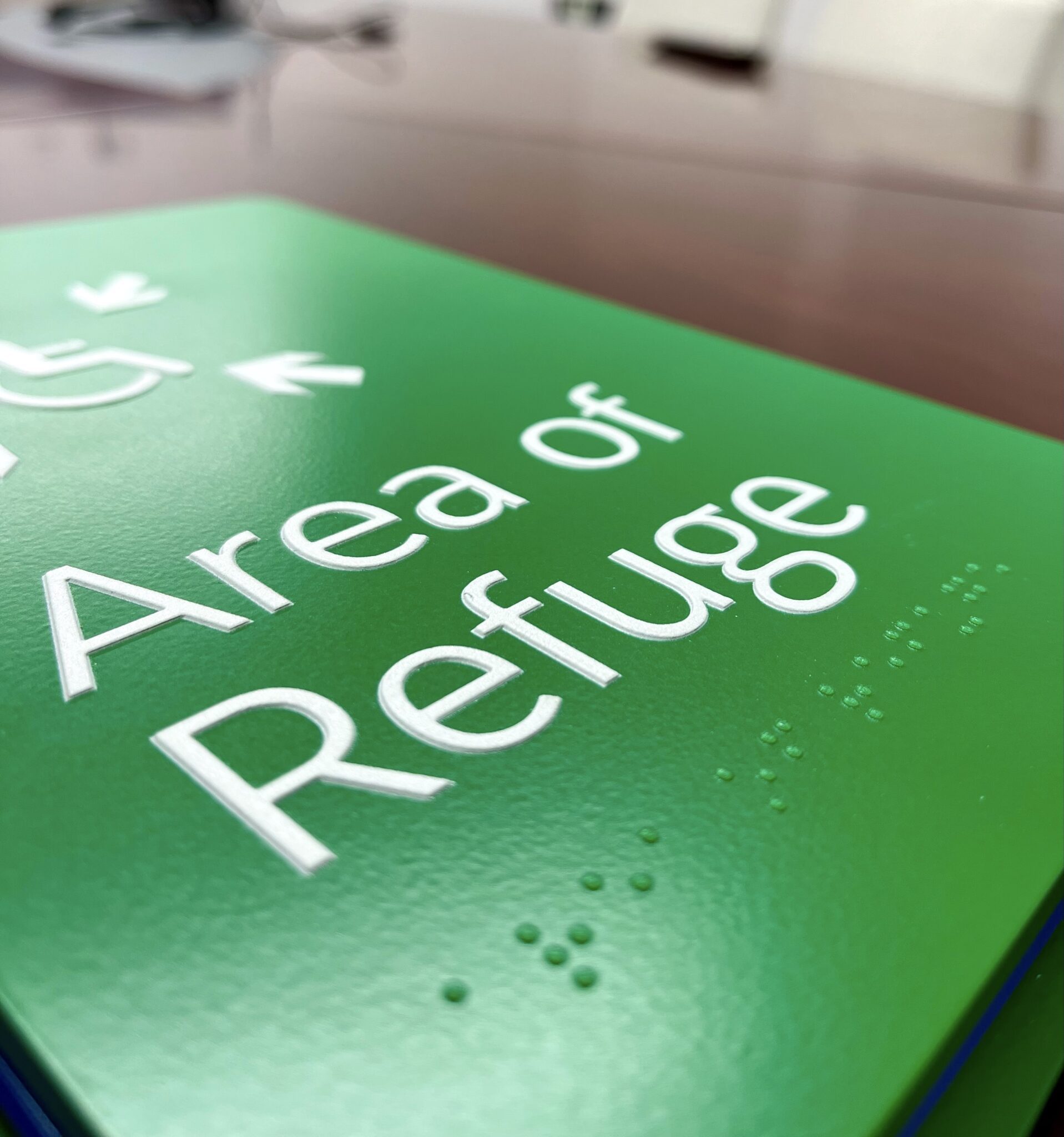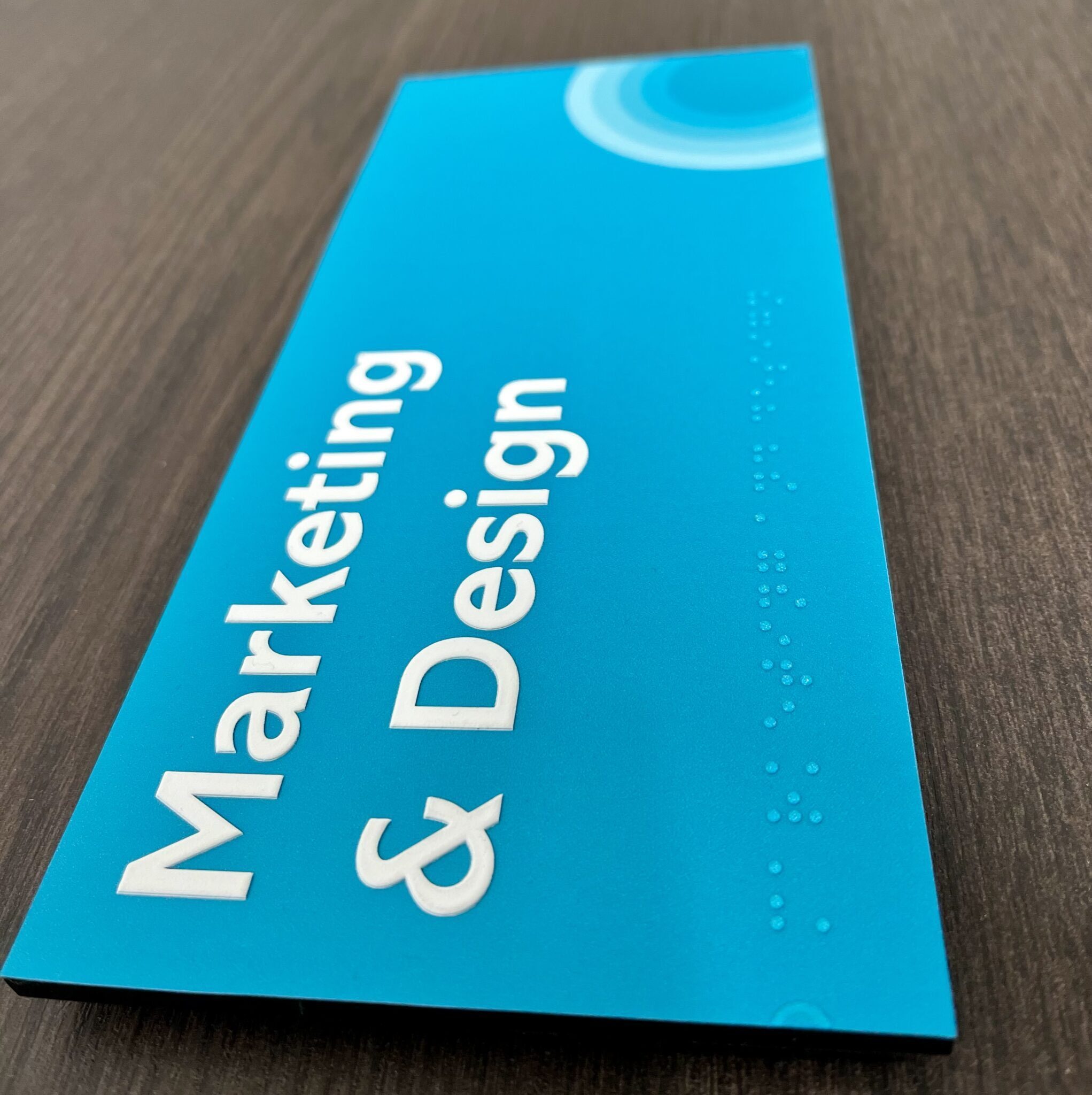
Braille and Tactile: Inclusive and Accessible Signage
In-House Design, Production, and Installation
We design, produce, and install Braille and Tactile signage, ensuring a seamless process from start to finish. A tactile sign is defined as any sign containing information that can be obtained by touch. Braille, raised print, raised symbols, and pictograms are all examples of tactile information. Braille, a tactile system of reading and writing, is used worldwide by people who are blind or vision impaired.
Why is it Important?
Accessible signage enables people to read signs, which is vital for accessing information, journey planning, navigation, and most importantly, ensuring safety. It is also a matter of equality, as Braille and tactile signs provide people who are blind or vision impaired with access to the same information that sighted people have.
At Coatek, we are committed to creating inclusive environments through expertly crafted Braille and Tactile signage. Contact us today to discuss your project and discover how we can bring your vision to life.
Accessibility Standards
Ireland has signed and ratified the United Nations’ Convention on the Rights of Persons with Disabilities (UN CRPD), 2006, and is hence bound by the obligations it establishes. Article 9 of the Convention states the obligations of State Parties to enable persons with disabilities to live independently and participate fully in all aspects of life.
It also specifies that State Parties shall take appropriate measures to provide signage in Braille and easy-to-read and understandable forms in buildings and other facilities open to the public.
Best Practice Recommendations
- Signs should be accessible to all users of a building or facility, including people who are blind or vision impaired.
- Signs on panels in lifts, room numbers in hotels, doors, and openings to public areas such as toilets shall have raised tactile signage and include Braille.
- Use uncontracted (Grade 1) Braille for signs with 10 words or less. Use contracted (Grade 2) Braille for signs with more than 10 words.
- Braille dots should have a dome or rounded shape for easy recognition.
- Audit Braille signs regularly and replace signs where Braille cells have become damaged or worn to ensure information is accurate.


